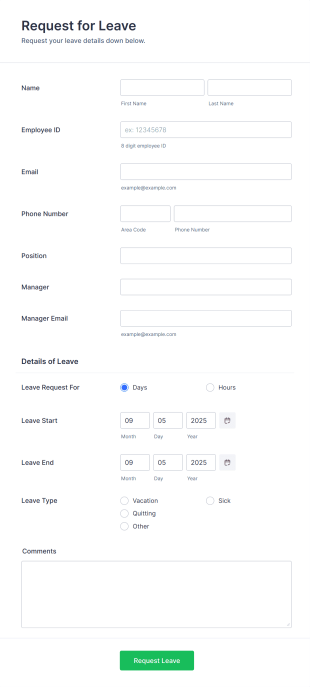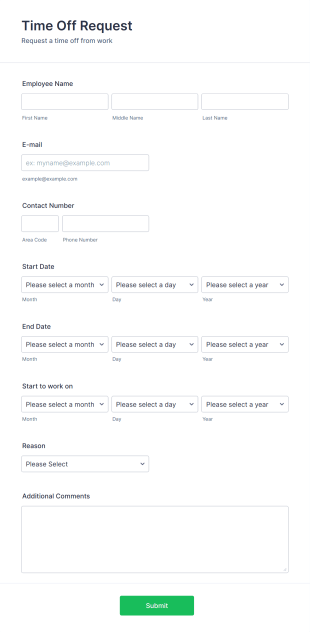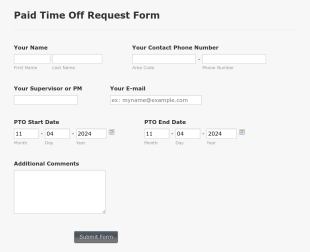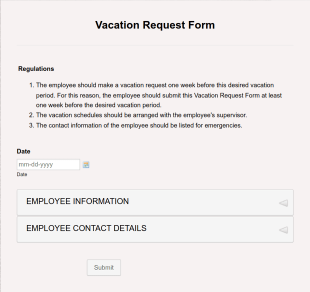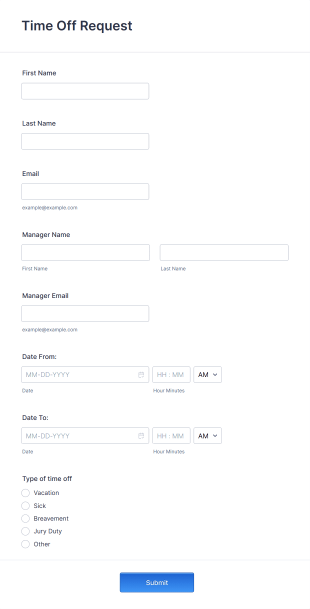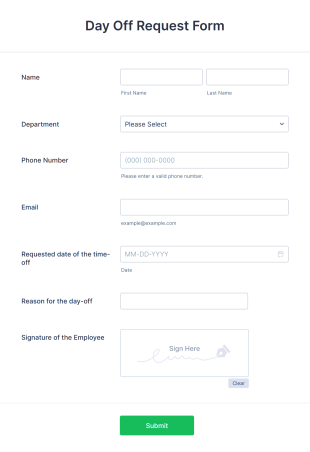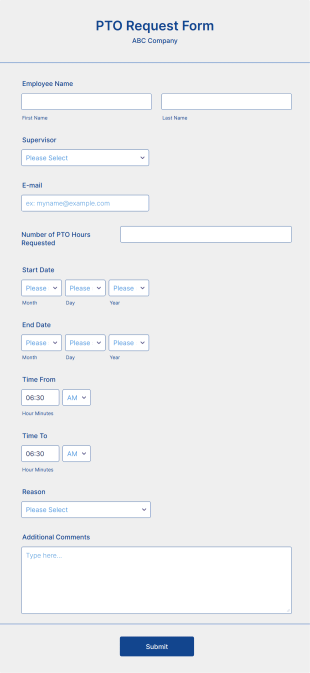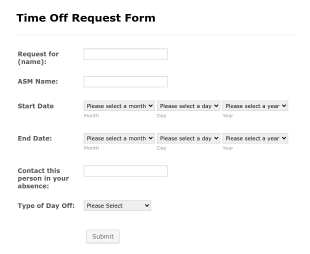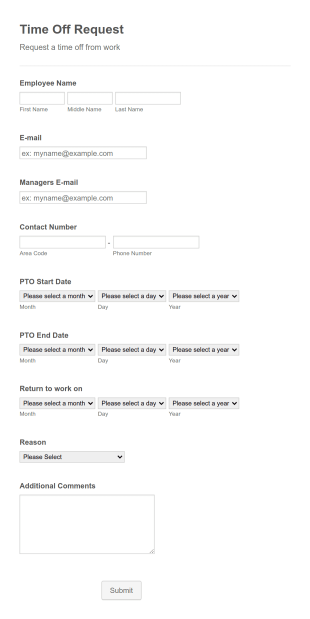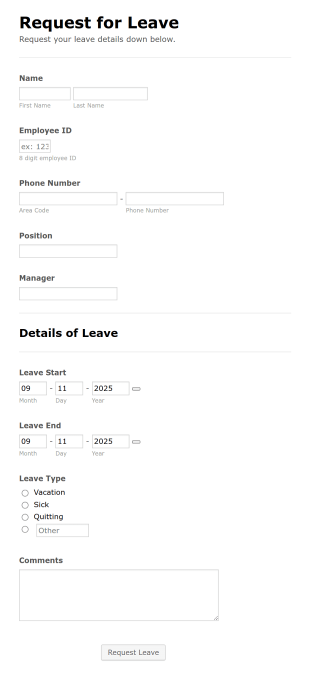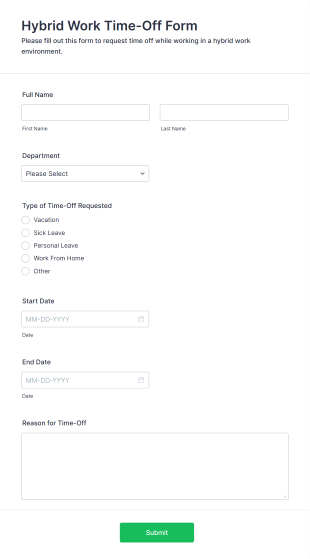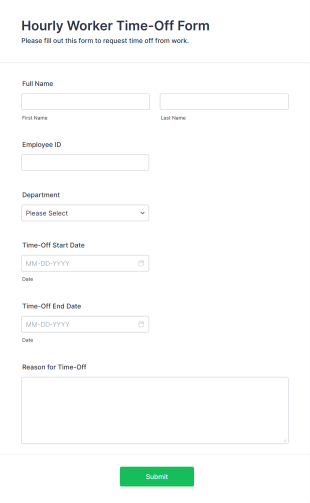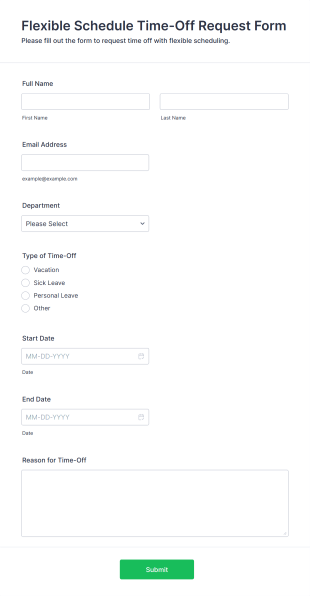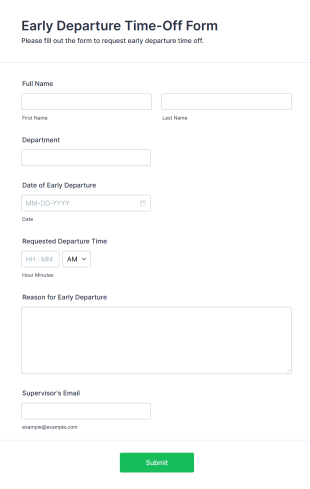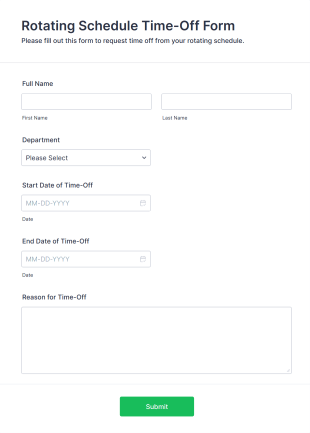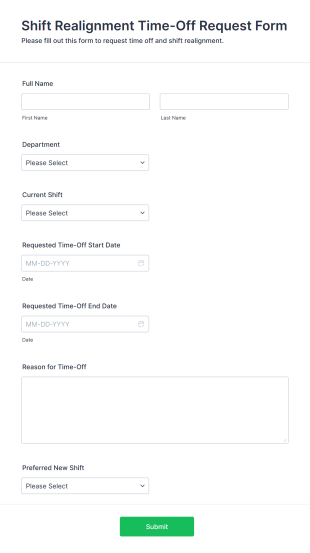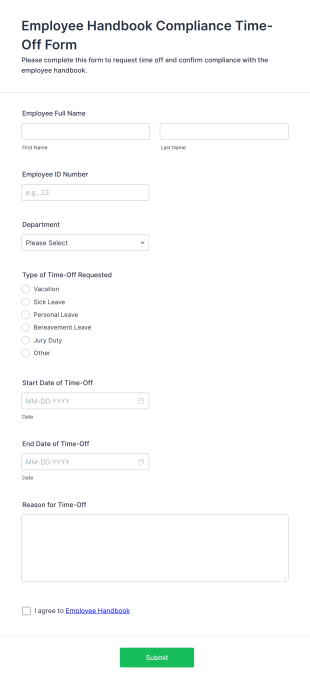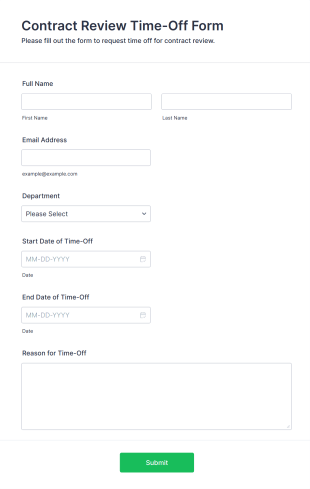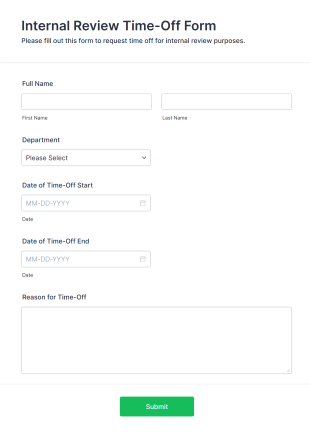Time Off Request Forms
Leave Request Form
The template allows getting instant leave requests from employees with all relevant information that is needed. You can add more customized fields with Jotform.
Go to Category:Human Resources FormsTime Off Request Form
The Time Off Request Form allows to track employee time off requests on a daily basis, where employees enter their contact information, start and end date of their leave, time interval information and further comments if any.
Go to Category:Time Off Request FormsPTO Request Form
A paid time off (PTO) request form template is a type of document that employees send to their managers to request time off of work.
Go to Category:Business FormsVacation Request Form
Use this sample vacation request form template, start to collect the necessary information from your employees and track the vacation schedules in order to distribute the duties easily.
Go to Category:Business FormsVacation Time Off Request Form
Request to take leave or Off from work. With the radio button (list of reason) and a text box where you input how many hours you requested.
Go to Category:Request FormsDay Off Request Form
Easily collect and manage day off requests online. Great for managers or HR professionals. Receive requests and signatures from any device. Customize without coding.
Go to Category:Human Resources FormsPaid Time Off (PTO) Request Form
A Paid Time Off Request Form is a document that employees use to request time off from their employers. Streamline your employee time off process with a form that fits your needs!
Go to Category:Human Resources FormsDays Off Request Form
A days off request form is used by employees to request an upcoming time off from employers.
Go to Category:Business FormsWeather Related Time Off Request Form
The Weather-Related Time-Off Request Form allows employees to request time off due to adverse weather conditions, streamlining the process for HR departments and managers.
Go to Category:Administrative FormsHybrid Work Time Off Form
The Hybrid Work Time-Off Form simplifies the process of requesting time off for employees in a hybrid work environment, ensuring efficient data collection and management for HR departments.
Go to Category:Human Resources FormsHourly Worker Time Off Form
The Hourly Worker Time-Off Form allows hourly employees to submit time-off requests easily, streamlining approval processes and maintaining clear records of employee availability.
Go to Category:Human Resources FormsFlexible Schedule Time Off Request Form
The Flexible Schedule Time-Off Request Form allows employees to submit requests for flexible time-off arrangements, helping HR and management manage schedules efficiently.
Go to Category:Application FormsEarly Departure Time Off Form
The Early Departure Time-Off Form helps employees request permission to leave work early, streamlining the approval process for HR departments and managers.
Go to Category:Human Resources FormsEconomic Hardship Time Off Request Form
The Economic Hardship Time-Off Request Form allows employees to formally request time off due to financial difficulties, streamlining the approval process for HR departments.
Go to Category:Application FormsRotating Schedule Time Off Form
The Rotating Schedule Time-Off Form allows employees to submit time-off requests easily, helping HR departments manage schedules effectively and streamline data collection.
Go to Category:Human Resources FormsShift Realignment Time Off Request Form
The Shift Realignment Time-Off Request Form allows employees to submit time-off requests for shift changes efficiently, making it easy for managers to track and manage submissions.
Go to Category:Application FormsEmployee Handbook Compliance Time Off Form
The Employee Handbook Compliance Time-Off Form simplifies the process of requesting time off while ensuring compliance with company policies, making it easier for HR to manage submissions.
Go to Category:Human Resources FormsNight Shift Time Off Request Form
The Night Shift Time-Off Request Form allows employees to submit their time-off requests for night shifts, streamlining the approval process for HR departments and managers.
Go to Category:Application FormsCourt Appearance Time Off Form
The Court Appearance Time-Off Form allows employees to request time off for court appearances, streamlining the approval process for HR departments and management.
Go to Category:Administrative FormsContract Review Time Off Form
The Contract Review Time-Off Form simplifies the process of requesting time off while ensuring contractual obligations are acknowledged and reviewed, suitable for HR departments and managers.
Go to Category:Administrative FormsInternal Review Time Off Form
The Internal Review Time-Off Form allows employees to submit time-off requests for vacation, personal reasons, or medical leave, streamlining the review process for HR departments.
Go to Category:Administrative Forms